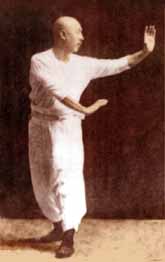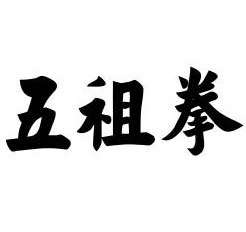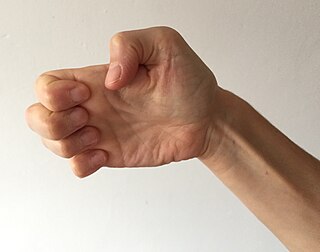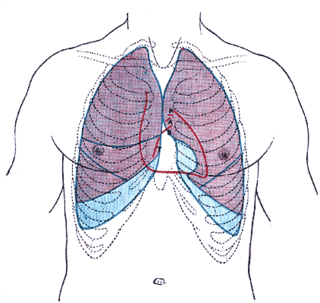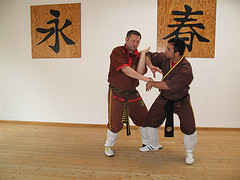In contemporary western pop culture
This article may require cleanup to meet Wikipedia's quality standards. The specific problem is: article is about death by pressure point attack, not intentional non-lethal incapacitation.(February 2022) |
Dim mak has become a kind of camp pop culture item which is recognized also outside the genre of martial arts films. In Thomas Pynchon's novel Vineland , one of the protagonists uses the "Quivering Palm Death Touch", which kills the opponent one year after it is used. In the TV series Quincy, M.E. , a 1977 episode entitled "Touch of Death" features a martial-arts movie star whose mysterious death is found to be a result of a dim mak attack against him ten days earlier.[ citation needed ] The lead character of the British TV series Gangsters (1978) is murdered by hired assassin "The White Devil" using a similar attack, with death occurring four days after he is touched. [12] Dan Brown's novel Inferno depicts a character incapacitating a guard by putting pressure on his wrist, explaining the technique as "Dim Mak". In the comedy film The Men Who Stare at Goats , George Clooney's character claims to have been hit with the Touch of Death, a "light tap" that causes death at an unknown point in the future, in one case "about eighteen years later".
Dim mak is referenced in Bloodsport (1988). In the film, Dux (Jean-Claude Van Damme) proves that he has been trained by Senzo Tanaka (who is also well-respected within the fighting world) by demonstrating a variation of dim mak to the judges to back his claim. He proceeds to strike at a stack of bricks with his hand very carefully positioned before he aims downward at a specific force of speed and angle, breaking only the bottom brick. His invitation ends up being honored. Chong Li also uses the dim mak technique on Pumola during the Kumite before ending the match.
In the Star Trek universe, the Vulcan nerve pinch is frequently used as a non-lethal method of applying pressure to a pressure point in order to render the target unconscious.
In Doctor Who , the Third Doctor describes himself as a master of Venusian aikido on various occasions, accounting for his unique form of hand-to-hand combat, which allows him to immobilize opponents in a manner similar to the Vulcan nerve pinch. Later incarnations of the Doctor have shown varying degrees of expertise in hand-to-hand combat, although only some spin-off material explicitly identifies the later Doctors' combat skills as originating from Venusian aikido.
In the Kung Fu Panda movie series, the Wuxi Finger Hold technique used by Po is a form of Dim Mak. Likewise, the villain Tai Lung and the mentor Oogway both use a nerve-strike attack to paralyze the opponent.
In the Avatar: The Last Airbender series, the character Ty Lee uses a form of Dim Mak called chi-blocking to cripple or immobilize opponents and leave them unable to "bend" (control the elements). The fighting style is reintroduced in The Legend of Korra as the primary fighting style of the Equalists, who specifically target those able to bend elements.
In the Batman: The Animated Series episode "Day of the Samurai", Kyodai Ken, Bruce Wayne's rival from his days training in Japan, forces Master Yoru to reveal his secret death touch. Wayne survives the technique by wearing a protective pad to absorb the force of the blow.
In Kill Bill: Volume 2 , a 2004 American martial arts film written and directed by Quentin Tarantino, a martial arts teacher named Pai Mei uses his Five Point Palm Exploding Heart Technique to kill opponents after they have taken five steps. [13] [14]
In the 2012 video game Sleeping Dogs it is the final and most powerful move that can be learned.
In The Suicide Squad 2021 film, Bloodsport, Peacemaker and Rick Flag use dim mak to kill their captors.
In Mortal Kombat 1, the Kameo character Shujinko uses a fatality that imitates a scene where the Bride kills Bill.
Steve Aoki's independent label Dim Mak Records is a reference to Bruce Lee's Death Touch martial art. [15]

